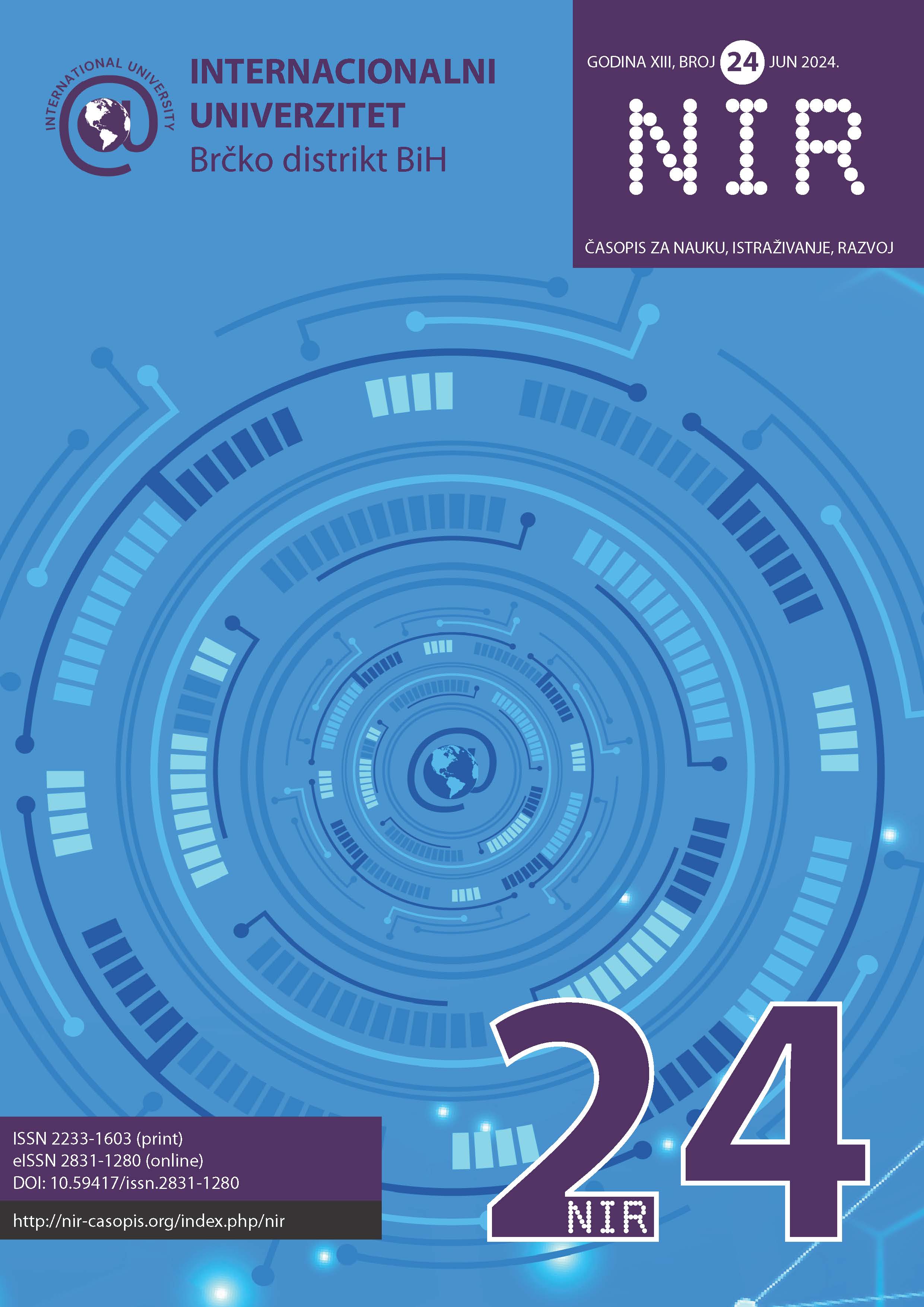COMPUTER NETWORK SECURITY
DOI:
https://doi.org/10.59417/nir.2024.24.58Keywords:
Networks, protocols, packets, LAN, antivirus, cryptographyAbstract
The computers that we connect to the network serve to exchange data that is in the computer’s working memory. The data transmission itself can also be carried out using electronic signals, and these connec- tions can be wireless networks and wired networks. Bits that send one after another at the same time at the appropriate speed, and convert a digital signal into an analog signal and vice versa perform a modem. Computers can also be connected to both a local network and an extensive network. Each com- puter connected to the network has its own unique number (address), by which it can be determined on which continent it is located, in which country and to which address the server is connected to. The data is sent in accordance with the previously agreed protocol in the form of a package. The security of protecting confidential data and documents has existed in the world for a long time. Throughout history, there have been many methods of data protection and Internet security. The methods of protection on the Internet were sometimes ineffective and did not provide enough protection that was needed. With the development of cryptography and technology, very good ways of encrypting and protecting doc- uments have been discovered. Information systems are the basis of basic and modern business. Their main task is to base themselves on a Network System, as well as their business and security. Therefore, it is extremely important that we become as familiar as possible with the security problems of computer networks and ways to solve them. Modern computer networks are increasingly based on the TCP-IP pro- tocol, thanks to the simple identification of device addresses on the network and the ability to connect to the Internet and use its network services. Security system protection planning is based on studying known threats and proposing solutions as a result of compromises. But effective protection implements not only one solution, but also a combination of many other options for network protection and security. In this article, we will briefly consider the general system of networks, as well as their security, occur- rence and separation.
References
B. Đorđević, D. Pleskonjić, N. Maček, “Operativni sistemi: UNIX i Linux”, Viša elektrotehnička škola, Beograd, 2004.
Čagalj, M. (2006) Sigurnost u bežičnim računalnim mrežama, Fakultet elektrotehnike, strojarstva i brodogradnje, Split.
Darko A; Osnovna mrežna terminologija, (2010). Eugene B; Uvod u podatkovne komunikacije.(1999).
Ilišević, S; Brzi vodič kroz kućen mreže, BUG & SysPprint, Zagreb, (2003).
Jušić, S. Sigurnost web aplikacija. Komunikacijske tehnologije i norme u informatici. (2003).
M. Bojović, “Squid proksi server”, diplomski rad, Viša elektrotehnička škola, Beograd, (2005). Milan K; i Dario C; Uvod u računalne mreže, Zagreb, (2014).
Mužić, V: Metodologija pedagoškog istraživanja, Svjetlost, Sarajevo, (1982).
M. Živković, “Algoritmi”, Matematički fakultet, Beograd, (2000). Olivier B; Umrežavanje računala: principi, protokoli i praksa. (2011).
Pralas, T. (2004) Računalne mreže – pasivna i aktivna oprema, Sys portal, Carnet, Zagreb.
Randić M. (2010) Upravljanje mrežom i uslugama, Fakultet elektrotehnike i računarstva, Za- greb.
Sinković, V. Informacijske mreže, Školska knjiga, Zagreb (1994).
Srdić, Ida, Hrpka, Branko, K; Goran, Udžbenik iz informatike, ALFA d.d., Zagreb, (2007). Škundrić, S., Sok, A. (2007) Analiza računalne mreže na tehničkom fakultetu u Rijeci, Tehnički Fakultet, Rijeka.
Toni P;, Računalne mreže – OSI referentni model, (2008).
V. Vasiljević, P. Gavrilović, B. Krneta, M. Krstanović, N. Maček, B. Bogojević,“Priručnik za ad- ministraciju računarskih mreža”, Viša elektrotehnička škola, Beograd, (2004).
Downloads
Published
How to Cite
Issue
Section
License
Copyright (c) 2025 NIR

This work is licensed under a Creative Commons Attribution-NonCommercial 4.0 International License.




